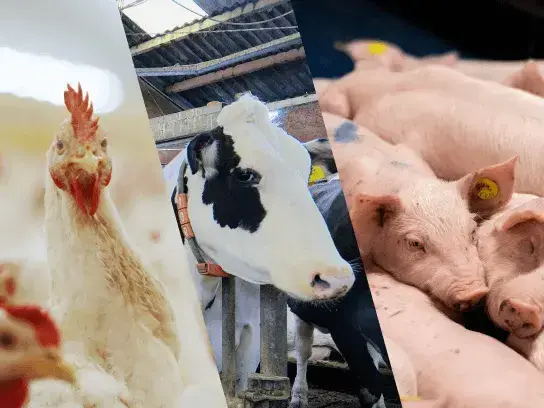- Poultry
- Laying Hens
- 2 minutes read
The poultry farming industry is in a constant quest to discover innovative techniques on how to increase egg production in commercial layers. Among the myriad of factors considered, lighting has gained increasing attention. One area under exploration is the role of UVA (Ultraviolet A) lighting, a component of natural sunlight known to influence the growth and behaviour of various organisms.
While UVA's impact on poultry has been minimally examined until recently, our research team has stepped into the breach to investigate this undiscovered avenue.
Purpose & Methodology
Our research aimed to delve into the potential benefits of UVA lighting on laying hen behaviour, performance, and overall health.
The study was conducted in a small-scale setting using two groups of four hens. One group experienced the HATO CORAX DDS fitted with UVA lighting, while the other was exposed to the same model with UVA lighting disabled. The experiment comprised two distinct periods, with identical treatments given to both groups. We mitigated possible pen effects by swapping the hens between pens during the research.

Various measurements were meticulously recorded throughout the study, focusing on aspects such as feed and water intake, weights and growth, hygiene and litter quality, and health evaluations. We also zeroed in on specific measurements of the eggs, including weights, dimensions, and quality. In this blog, we focus on how UVA lighting increases (uniform) egg production in commercial layers.
A complete overview of the improvements in laying hen behaviour, performances and more? Download the full research paper for free!
UVA Increases (Uniform) Egg Production in Commercial Layers
During the laying period, from week 21 to 31, there were several noteworthy observations related to laying performances.
Firstly, the consistency of the laying persistency in the UVA group was striking. These hens were almost never missed an egg, a severe contrast to the non-UVA group whose persistency wavered and consistency decreased after week 24.

The uniformity of egg size in the UVA group was another standout result. All eggs fell within size grade M, whereas the non-UVA group displayed far less consistency, with egg sizes spread across three or even four gradings.
 Most importantly, in response to the question of whether UVA increases egg production in commercial layers, we observed a substantial increase in total egg production for the UVA group. Until week 31, this group produced 345 eggs compared to the non-UVA group's 297, a noteworthy difference of 48 eggs per four hens. Furthermore, laying percentage reflected this improvement, with 98.7% for the UVA group and 88.6% for the non-UVA group. Imagine the difference this makes in a 50,000 hen house!
Most importantly, in response to the question of whether UVA increases egg production in commercial layers, we observed a substantial increase in total egg production for the UVA group. Until week 31, this group produced 345 eggs compared to the non-UVA group's 297, a noteworthy difference of 48 eggs per four hens. Furthermore, laying percentage reflected this improvement, with 98.7% for the UVA group and 88.6% for the non-UVA group. Imagine the difference this makes in a 50,000 hen house!
Note that this research took place on a small scale. In reality, this percentage may differ, but will still show a significant increase.
Improving life through brightness
Our research findings suggest that UVA lighting can play a significant role in improving egg production in commercial layers. This could well be the key to unlocking enhanced productivity and uniformity in egg-laying, paving the way for greater efficiency in the poultry industry.
Our research studied more than just the egg production. Discover the impact of UVA on hen maturation, litter quality and hen behaviour in the full research paper.
Download it here for free!
Stay informed
Lighting matters. That's why we share our knowledge with the world through HATO Insights.
Pigs
Collaboration: How HATO Lighting and Optifarm Are Shaping the Future of Livestock
In modern livestock farming, success is no longer just about feed and shelter but about precision, insight, and care. That’s why HATO Lighting and Optifarm...
Pigs
How Optifarm is Transforming Livestock Farming with AI
In a world where agriculture is rapidly evolving, Optifarm stands out as a pioneer - bridging the gap between traditional farming and cutting-edge technology....
At HATO, we think high-quality lighting solutions, designed to enhance animal welfare and livestock production, must be accessible and affordable for all farmers.
Success Stories
Five Years, Zero Replacements: Why CORAX Is George Navaro’s Lighting of Choice
Herman Kusters: I would definitely recommend RUDAX

.webp)
.webp)
